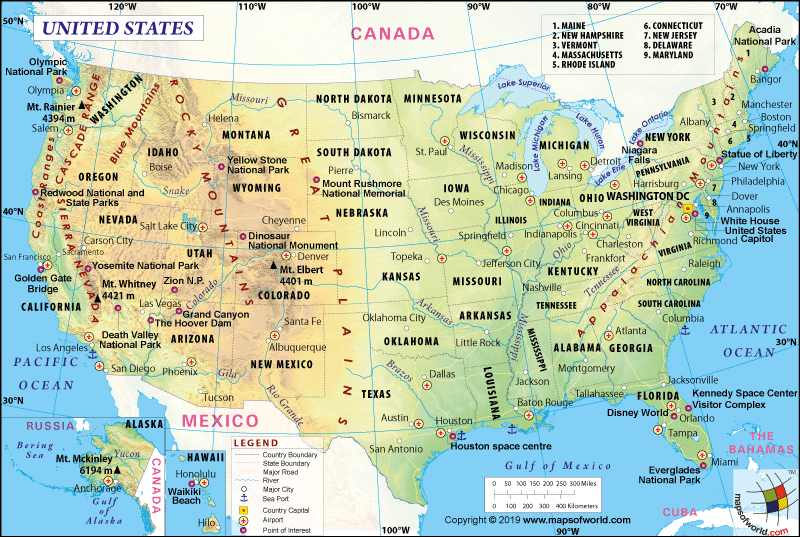What is the Selma to Montgomery National Historic Trail?

The 54-mile-long Selma to Montgomery, Alabama National Historic Trail is the shortest national historic trail in the United States. It chalks out the routes of three historic protest marches held in 1965 and organized by African-American citizens in the state of Alabama demanding their constitutional right to vote. These marches were part of a larger voting rights movement that swept the southern states and culminated in the passage of the Voting Rights Act of 1965. The Selma to Montgomery marches were an important episode in the history of the American Civil Rights Movement.
The ratification of the 15th Amendment in 1870, after the Civil War, granted all male citizens the right to vote. In theory, this meant that African American men were allowed the right to vote (all women of voting age were not granted the right to vote till 1920). By 1876, however, the US Supreme Court and other state courts interpreted the 15th Amendment in a way that disenfranchised African American men. The three major ways in which the voting rights of black American men were denied were by the imposition of poll taxes and literacy tests and by the passage of the Grandfather Clause by seven Southern states.
The Background
During the Civil Rights Movement of the 1950s and the 1960s the demands of the voting rights activists became impossible to ignore but the activists themselves were violently subdued. On March 7, 1965, a peaceful group of African American activists led by Rev. C.T. Vivian embarked on a march in Perry County, Alabama. A posse of Alabama state troopers and white supremacists attacked the protesters with sticks, whips, and teargas. The protestors were beaten up and some were even gravely injured. US Army veteran Jimmie Lee Jackson and his mother were also brutally attacked and Jackson was shot by a state trooper as he tried to protect his mother. Jackson’s death, eight days later, became the rallying point for the protestors who later embarked on the Selma to Montgomery marches. Their intent was to march to Alabama State Capitol and get Governor George Wallace to guarantee African Americans the right to vote in Alabama.
The First March
On March 7, 1965, the day that would come to be known as “Bloody Sunday” nearly 525 Civil Rights protestors, led by John Lewis of SNCC and the Rev. Hosea Williams of the Southern Christian Leadership Conference, headed out southeast from Selma on the march and tried to cross the Edmund Pettus Bridge on their way to Montgomery. There they were faced with a wall of state troopers who charged at them beating them with nightsticks and deploying tear gas. Some troopers charged at them on horseback and injured many. Television broadcast of these horrifying images jolted Americans and garnered support for the campaign.
The Second March
The horror of Bloody Sunday brought support for the protestors from across the country and people from all races and religions supported the voting rights movement. Rev. Martin Luther King, Rev. James Bevel, and Diane Nash went about organizing a march on Tuesday, March 9, 1965 – merely two days after the first march. Over 1500 protestors now set out, led by Dr. King out on the Edmund Pettus Bridge. By this time, however, a court injunction had prohibited the protest march from taking place. When Dr. King was approached by state troopers, he did not proceed but knelt down to pray while the protesters returned to Brown Chapel. This day is often referred to as Turnaround Tuesday. Despite the relative peace of the day, three ministers who had joined the march were attacked in Selma that evening and one of them died.
The Third March
The third march to Montgomery commenced on Sunday, March 21, 1965. Nearly 8,000 people of all races, spiritual affiliations, genders assembled at Brown Chapel to set out on the protest march led by Dr. King. Only 300 protestors, however, were allowed to march through the two-lane Highway-80 to Montgomery. They slept in fields in nearly freezing temperatures and braved the rain. As they reached the City of St. Jude the highway widened to four lanes and thousands of protesters once again joined the march. By the time the march reached the State Capitol Building in Alabama, there were about 25,000 protestors present. It is here that Dr. King delivered his “How Long, Not Long” speech. Gov. Wallace refused to meet Dr. King but the latter handed his petition to one of his secretaries.
Voting Rights Act of 1965
Selma to Montgomery marches and other Civil Rights Movement protests resulted in the signing of the Voting Rights Act into a law in August 1965. Literacy tests and poll taxes were immediately withdrawn and the voter registrars were overseen by federal government officials. By the end of the year nearly 110,000 African Americans had registered in the states of Alabama, Georgia, Mississippi, and Louisiana. By the 1970, hundreds of African American candidates were elected to the Congress.
Related Links:

